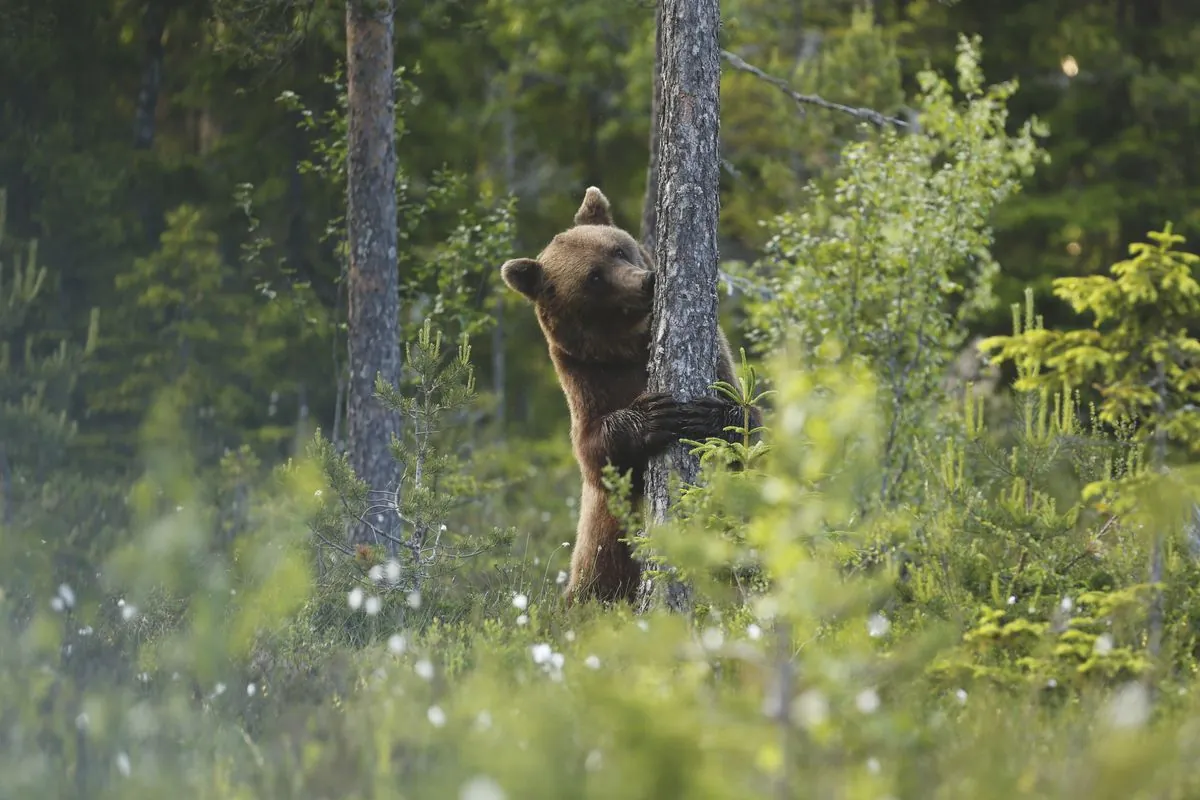Sweden's Brown Bear Hunt Sparks Conservation Debate
Sweden's brown bear hunting season begins with 486 licenses issued, raising concerns among conservationists about population decline. The controversial decision contrasts with Norway's hunting ban.

Sweden's annual brown bear hunting season commenced on August 21, 2024, with authorities issuing 486 hunting licenses. This decision has ignited a heated debate between hunters and conservationists, highlighting the delicate balance between wildlife management and conservation efforts.
Jonas Kindberg, representing the Swedish Carnivore Association, expressed grave concerns about the potential impact on the bear population. He stated in June 2024 that the current hunting quota could lead to a significant 20% reduction in the country's bear numbers. Kindberg emphasized the importance of maintaining a stable population, suggesting that a more sustainable annual cull would be around 250 bears.
"It was absolutely not okay to shoot this many bears. If you want the population to remain stable at around the 2,400 animals as we estimate today, you can only shoot about 250 bears annually."
The brown bear, Europe's largest land predator, plays a crucial role in maintaining ecosystem balance. These magnificent creatures can live up to 30 years in the wild and possess remarkable abilities, including running speeds of up to 56 km/h despite their imposing size. Brown bears are omnivorous, with a diet consisting primarily of berries and insects, supplemented occasionally by larger prey.
Historical data reveals a concerning trend in Sweden's bear population. The last comprehensive estimate in 2017 indicated approximately 2,900 bears in the country. However, recent years have seen a decline, particularly since 2020. This decrease coincides with an increase in hunting licenses, which peaked at 649 in 2023, up from 622 in 2022 and 501 in 2021.

Sweden's approach to bear management stands in stark contrast to its neighbor, Norway. While Sweden allows regulated hunting across seven counties in central and northern regions, Norway maintains a 1,600-kilometer border where bear hunting is strictly forbidden. This disparity in policies highlights the complex nature of wildlife conservation in Scandinavia.
The hunting season in Sweden is subject to strict regulations, ending no later than October 15, 2024. Notably, the county of Värmland, west of Stockholm, closed its hunting season on the very first day after quickly reaching its allocated quota of three bears.
It's worth noting that brown bears in Sweden are part of one of the densest populations in Europe. These animals, protected under the EU Habitats Directive, face various challenges beyond hunting. Climate change is increasingly affecting their habitats and behavior, adding another layer of complexity to conservation efforts.
As the debate continues, it's crucial to consider the broader implications of bear management policies. Brown bears, with their complex social structures and vital ecological roles, represent more than just hunting targets. They are integral components of Sweden's natural heritage, demanding careful consideration in balancing human activities with wildlife preservation.


































